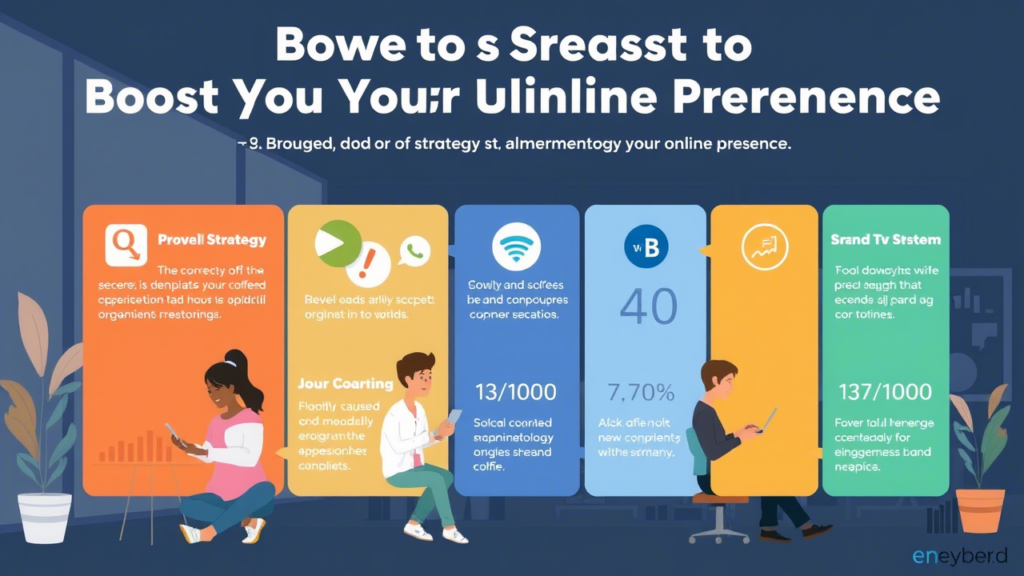How to Create a Strong Brand Identity: A Step-by-Step Guide for Beginners
In today’s competitive market, your brand is more than just a logo or a catchy name — it’s the personality, voice, and visual experience that sets your business apart. Whether you’re launching a startup or rebranding an existing business, a strong brand identity is essential to stand out, build trust, and attract loyal customers.
This step-by-step guide is designed for beginners who want to create a brand identity that is clear, consistent, and memorable.
What Is Brand Identity?
Brand identity is the collection of all visual, verbal, and emotional elements that represent your brand to the world. It includes everything from your name and logo to your tone of voice and the way you interact with customers. Together, these components communicate your brand’s values, mission, and purpose.
In short, brand identity is how you want people to perceive your business.
Step 1: Define Your Brand Purpose and Core Values
Before diving into design or marketing, you need a clear understanding of why your brand exists and what it stands for.
Ask Yourself:
- Why did you start this business?
- What problems do you solve?
- What values guide your actions?
- How do you want to impact your customers’ lives?
Example:
If your business sells eco-friendly products, your brand purpose might be “to reduce environmental impact by offering sustainable alternatives.” Your values may include transparency, innovation, and responsibility.
Pro Tip:
Write a concise brand purpose statement that you and your team can refer to. This becomes the foundation of your brand identity.
Step 2: Understand Your Target Audience
Your brand identity should speak directly to the people you want to reach. Knowing your audience helps you shape your messaging, visuals, and tone in a way that connects authentically.
Create a Buyer Persona:
- Age, gender, occupation
- Interests and hobbies
- Challenges and pain points
- Purchasing behavior
- Preferred communication channels
Why It Matters:
A playful, fun brand voice might appeal to Gen Z, while a professional and informative tone may better serve working professionals or B2B audiences.
Step 3: Analyze Your Competitors
Research other brands in your industry to understand what’s working — and where there are opportunities to stand out.
Look For:
- Brand color schemes and logos
- Website and social media style
- Messaging and tone
- Customer engagement strategies
Goal:
Don’t copy your competitors — aim to differentiate. Identify gaps you can fill or unique value propositions your brand can own.
Step 4: Choose Your Brand Name and Tagline
Your brand name is one of the most critical elements of your identity. It should be easy to remember, relevant to your niche, and ideally available as a domain and social media handle.
Tips for Choosing a Great Name:
- Keep it short and simple
- Make it unique and memorable
- Ensure it’s easy to spell and pronounce
- Check domain and trademark availability
Tagline:
A tagline is a short, catchy phrase that sums up what your brand is about. For example:
- Nike: Just Do It
- Airbnb: Belong Anywhere
Step 5: Design Your Visual Identity
This is the part most people think of when they hear “brand identity.” A strong visual identity ensures people recognize your brand immediately across all platforms.
Key Components:
- Logo
- Should be scalable and adaptable
- Works well in color and black & white
- Color Palette
- Choose 2–3 primary colors and a few complementary ones
- Colors evoke emotions (blue = trust, red = excitement, green = nature)
- Typography
- Use 1–2 fonts consistently
- Ensure readability across devices
- Imagery Style
- Use consistent photo, illustration, or icon styles
- Should reflect your brand’s tone and personality
- Design Guidelines
- Create a brand style guide for internal and external use
- Include logo usage rules, color codes, fonts, and sample designs
Step 6: Define Your Brand Voice and Messaging
Your brand voice is how you communicate with your audience in writing and speech. It reflects your personality and builds consistency across platforms like social media, email, and your website.
Ask Yourself:
- Is your brand formal or casual?
- Should it sound playful, inspiring, or serious?
- What vocabulary fits your audience?
Example:
A brand selling tech gadgets to professionals might use a knowledgeable and confident tone. A pet supplies store might be friendly, warm, and enthusiastic.
Step 7: Build a Consistent Online Presence
In 2025, your digital presence is often the first impression customers will have. Make sure every touchpoint reflects your brand identity accurately.
Website:
- Use your colors, fonts, and tone consistently
- Optimize for mobile and speed
- Include clear calls to action
Social Media:
- Use branded templates for posts
- Maintain a consistent posting schedule
- Engage in a tone that fits your brand personality
Email:
- Use branded headers and footers
- Speak in a consistent voice
- Personalize whenever possible
Step 8: Deliver a Memorable Customer Experience
Brand identity isn’t just what people see — it’s also how they feel when interacting with your brand. Providing a consistent and positive customer experience is key to building brand loyalty.
Key Areas:
- Product quality and packaging
- Customer service interactions
- Response time and communication
- Loyalty programs or thank-you notes
Pro Tip:
Turn satisfied customers into brand ambassadors by exceeding expectations.
Step 9: Document Everything in a Brand Style Guide
To maintain consistency, especially as your business grows, create a brand style guide that outlines all elements of your brand identity.
Include:
- Mission and values
- Audience personas
- Logo usage rules
- Typography and color codes
- Voice and tone guidelines
- Do’s and don’ts
This guide becomes your branding “bible” for internal teams, designers, and marketers.
Step 10: Evolve and Adapt Over Time
While consistency is key, brand identity isn’t set in stone. As your business grows, markets change, and customer preferences shift, your brand may need to evolve.
Keep in Mind:
- Rebranding can be strategic — not a failure
- Ask for feedback regularly
- Watch trends, but stay true to your core identity
Final Thoughts
Creating a strong brand identity takes time, thought, and intention. But by following this step-by-step guide, even beginners can build a brand that’s not only visually appealing but emotionally compelling and strategically positioned.
In 2025, where digital presence and customer expectations are at an all-time high, a solid brand identity is your ticket to standing out in a noisy market. Start by understanding who you are, who you’re serving, and how you want to be remembered — and let your identity grow from there.


